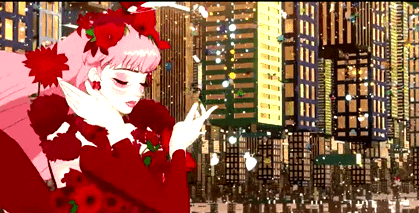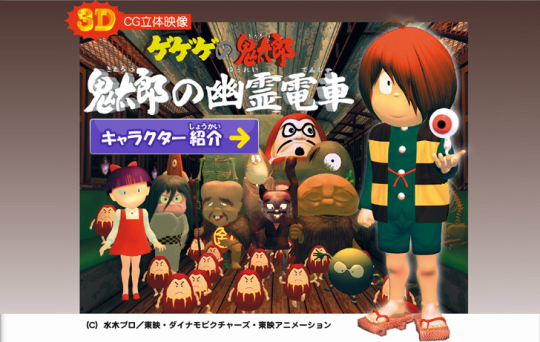originally posted at https://canmom.tumblr.com/post/689263...
Hi friends, happy Thursday!
It’s going to be a short animation night tonight, since I’ve got an art piece to urgently finish for a fan exchange. But since we didn’t manage to watch it back on Animation Night 107, tonight we’ll be watching Mamoru Hosoda’s film Belle to really give the video encoder a workout.

So, let me quote what I wrote about it last time:
The occasion is of course the release of Hosoda’s latest movie Belle (竜とそばかすの姫 - lit. The Dragon and the Freckled Princess). This film reprises a theme that was very prominent in Hosoda’s early films such as Summer Wars and in fact the franchise film Digimon Adventure: young people going into an immersive digital world. It’s finally escaped the film festivals and, of course, landed in the hands of fansubbers.
(…)
Then at last we have Belle - once again coming to a digital world, this time just slightly more than ten years on! Hosoda’s latest film follows a seventeen-year-old girl Suzu who lost her ability to sing after the death of her mother, but rediscovers her passion for performance as an avatar in a colourful virtual world. Here, she gets drawn into the intrigue surrounded by a mysterious figure called the ‘Dragon’ after he disrupts one of her concerts. This time, the digital world spills out into the real in a different way: a vigilante named Justin starts threatening both Suzu and the ‘Dragon’ with doxxing, essentially.
The film is notable for being one of Hosoda’s first films to make heavy use of CG; the scenes inside the virtual world use 3DCG to attempt to hit that sense of overwhelming spectacle, while more usual usual cel animation is used outside. It also breaks a little from strict kagenashi with some use of digital compositing and filters, although the designs still carry that familiar simplicity and direct, childlike appeal. This change proved a little controversial for fans of Hosoda, and I’m going to be interested to see how well it holds up…
I should correct myself a bit here: Hosoda has worked in 3DCG on another digimon film… and also in another short film associated with the venerable GeGeGe no Kitarō series. That series began life before manga was even a thing in 1933, as a kamishibai called Hakaba Kitarō (墓場奇太郎) written by Masami Itō and illustrated by Keiyō Tatsumi.

Decades later, with a world war in between, it became a manga by Shigeru Mizuki. At first deemed too scary for kids, it found a home in shōnen magazine and a whole series of others, before eventually landing in with one of the oldest TV anime, first adapted by Toei in 1968 just a few years after Astro Boy, where it became a big part in helping to re-popularise the concept of yōkai in modern times.
Since that point, it continued to get another five new series and a few films at intervals of years to decades - the basic premise of graveyard-dwelling Kitarō, last of the ‘ghost tribe’, encountering various mythological monsters from not just Japan but other countries such as China proved very flexible!
Hosoda’s entry came in 1999, released within a month of his Digimon short film that we viewed last time. It was a short 3D film called ゲゲゲの鬼太郎 鬼太郎の幽霊電車 GeGeGe no Kitarou: Kitarou no Yuurei Densha (Kitarou’s Ghost Train), and it’s not exactly easy to acquire; the only wide release came from a DVD called CG Toei Animation Festival which is not exactly widely available. The same, unfortunately, seems to be true of his CG Digimon short, which was on the same DVD. I have been able to find a couple of torrents of it on nyaa, but none seem well seeded, so if anyone has any ideas how to track it down I’d be all ears.
The other piece of Hosoda CG, much more relevant to Belle, is his short advert film Superflat Monogram with Takashi Murakami - yes, the superflat guy himself! This film is designed to promote the French fashion brand Louis Vuitton, who had a Murakami-themed collection; Hosoda worked on it right after his departure from Ghibli and shortly before Baron Omatsuri and the Secret Island (and on that front, lemme link kVin’s article again). The result was this short film, in which a girl outside a clothing store suddenly falls into an elaborate fantasy world…
This has what may by now be familiar Hosoda motifs for a virtual/fantasy world: a white void, big circles, lots of particle effects. As far as superflat goes, we can certainly see Hosoda’s characteristic flat kagenashi (unshaded) designs on his characters, but as for how it fits into Murakami’s broader ‘superflat’ project, I don’t really have time to dig into tonight. In any case, it demonstrates a combination of 3DCG for the setting and traditional animation for the protagonist girl, so we might even consider it a prototype for Belle in a way.
So tonight: keeping things short and sweet. I’ll show you Belle, and a couple of little Hosoda tidbits like the CG digimon film and Superflat Monogram. We’ll be on Picarto.tv/canmom again at about 8pm UK time (20 minutes), and after the film ends I’ll go straight into an art stream hope to see you there either way!~
So now I’ve finally seen it, Belle was… well, sadly, it was a bizarre disappointment compared to just about everything Hosoda has directed before. RIP.
Certainly, it had plenty of moments of micro-level strong direction - interesting layouts, the confidence to do things like have characters walk out of shot for dramatic effect, some very clever visual metaphors - and, as usual for Hosoda’s films at Madhouse and Chizu, moments of fantastic and subtle character animation. And there were many gorgeous backgrounds and strong bits of design, both in and out the computer world. Even the CG, although never as appealing as the traditional animation, worked better than average for cel-shaded CG.
But… the film’s many storylines never really came together and it seemed lacking in the emotional core which is like… never a problem Hosoda has. Half the film seemed like an underbaked version of The Girl Who Leapt Through Time where we could hardly get invested in the love quadrangle, the other half seemed like a weirdly rushed reprise of Summer Wars with a bunch of visual allusions to Disney’s Beauty and the Beast. But this side was itself undercut by the fact that Hosoda doesn’t really seem to understand how the internet or MMOs work! The climax of the film, when the protagonist doxxes herself to a wide audience in order to gain the trust of an abused child so she can… somehow track down where he lives and then stare down his dad, just doesn’t make sense on any level which makes the image fall rather flat.
And it’s frustrating bc there’s a lot of seeds for a good film here! He was clearly going for something with ideas like the corporate sponsored, superhero-styled vigilante doxxing squad. That’s a cool dystopian idea, but it’s barely engaged with. And the ways we use virtual worlds for escapism are certainly worthwhile things to approach in fiction, but the film’s understanding of this seems far more pulled from news headlines than any direct experience.
Hosoda loves the idea of all the bystanders using online tools to help solve a problem. And it’s a compelling concept! In his previous movies to engage with the idea, like Digimon Adventure: Our War Game and its email cannon or Summer Wars and its gambling of user accounts, we could believe that a huge crowd of people would be invested in what happens, whether by the big stakes or because they, like us, have been following the dramatic arc of the film. Here, though, the sheer obsession that both random users and actual news stations have for the identity of the ‘Beast’ - even as ‘a guy who crashed the concert of a popular virtual idol’ - just ends up incredibly unconvincing.
And meanwhile, images like the spam of hostile messages in many languages seem to be cribbing from Devilman Crybaby without really quite understanding what made the finale of that work so harrowing. And like, Hosoda is not the director to try and present a truly cruel and indifferent world! Which really comes out in the film’s finale: the protagonist goes to help two abused kids (the real identity of the Beast, who we learn about so late as to have no buildup or significance), but the film is not really prepared to address the fact that she is entirely incapable of rendering any sort of meaningful offline assistance. Yet all the same, she is praised, it is presented as a big step up in maturity and recovery of self-confidence… and we never find out what happens to the kids.
Even Hosoda’s less popular works, like The Boy and the Beast, have a clear understanding of how to structure a plot and get us to care about a character. Exceptionally so, in the case of films like Wolf Children. The online world in Summer Wars doesn’t really make any more sense than this one, but it’s not really an issue for that film because offline story and characters are easily compelling enough to carry the film. It’s all very odd, and I can’t really explain it. Big shame, but… that’s how it goes sometimes!
Comments